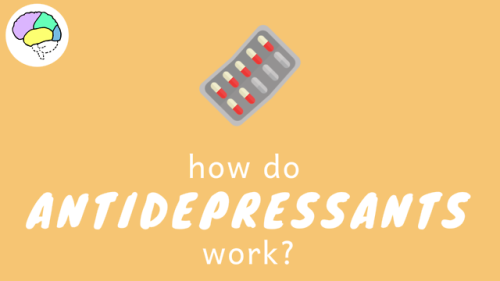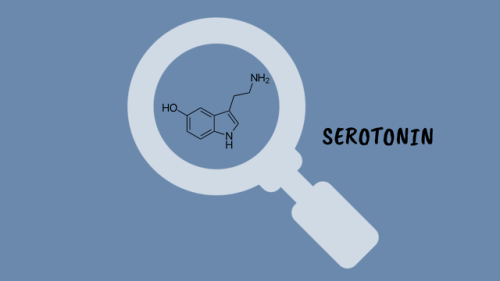Molecule Of The Day: Limonene
Molecule of the Day: Limonene


d-Limonene (C10H16) is a naturally occurring, chiral cyclic hydrocarbon with an orangey scent, and is found in citrus peels and citrus essential oils. It is a colourless liquid that is immiscible with water at room temperature and pressure.
Limonene undergoes reactions typical of an alkene, such as electrophilic addition and oxidative cleavage. It is biosynthesised from geranyl pyrophosphate in plants, and is classified as a terpene.

While limonene can be synthesised in the lab, as shown below, it is produced industrially from the steam distillation of citrus peels due to its natural abundance. Furthermore, citrus peels are a by-product of orange juice manufacturing, which makes it environmentally-friendly.

Limonene is commonly used in perfumes, soaps, and foods due to its fresh, citrus-like scent, and can also act as a pesticide. It is gaining prominence as an environmentally-friendly solvent and paint stripper. However, it is also a skin sensitiser, as it can dissolve the oils and fat underneath the skin!

Links:
Extraction of limonene from orange peels - YouTube
Dissolving styrofoam using limonene - YouTube
More Posts from Contradictiontonature and Others



How Do Antidepressants Work? (Video)
Your brain is a network of billions of neurones, all somehow connected to each other. At this very second, millions of impulses are being transmitted through these connections carrying information about what you can see and hear, as well as your emotional state. It’s an incredibly complex system but sometimes things go wrong. Despite extensive research, we are still not certain on the biology that underlies mental illnesses- including depression. However, we have come pretty far in developing effective treatments.

Happy Valentine’s Day! Hope everybody gets their share of dopamine and oxytocin today. #lovefeelings #scientificliteracy #braininlove #brainfeels

Marrow Christmas and a Happy New Smear!
A very seasonal smear made from red marrow extracted from the iliac crest of a donor’s pelvis prior to transplantation.
Happy Holidays everyone
i♡histo
The image amazingly captures a single moment in time during the development of thousands of red and white blood cells.
Many of the small cells that are visible, like the ones forming the snowman’s carrot nose, do not have a nucleus. These are brand new erythrocytes (red blood cells) that are ready to exit the bone and enter the blood stream.
The other, slightly larger cells that have nuclei, like the snowman’s eyes and his top button, are either precursors to these erythrocytes (they will mature and lose their nucleus) or are precursors to the other blood cells in our body, the leukocytes (white blood cells): lymphocytes, monocytes, neutrophils, eosinophils and basophils.
In addition, the bone marrow is home to the cells that form platelets. These are huge multinucleated cells aptly named megakaryocytes - perhaps the cell at the bottom right.
It is possible to identify each mature cell and its precursor based upon its morphology and staining at higher magnification. High or low levels of these cells can indicate disease or cancers of the blood.

New insights into the molecular basis of memory
Scientists from the German Center for Neurodegenerative Diseases (DZNE) in Göttingen and Munich have shed new light on the molecular basis of memory. Their study confirms that the formation of memories is accompanied by an altered activity of specific genes. In addition, they found an unprecedented amount of evidence that supports the hypothesis that chemical labels on the backbone of the DNA (so-called DNA methylation) may be the molecular basis of long-term memory. These findings are reported in “Nature Neuroscience”.
The brain still harbours many unknowns. Basically, it is assumed that it stores experiences by altering the connections between brain cells. This ability to adapt – which is also called “plasticity” – provides the basis for memory and learning, which is the ability to draw conclusions from memories. On a molecular scale these changes are mediated by modifications of expression of specific genes that as required strengthen or weaken the connections between the brain cells.
In the current study, a research team led by Dr. Stefan Bonn and Prof. André Fischer from Göttingen, joined forces with colleagues from the DZNE’s Munich site, to examine how the activity of such genes is regulated. The scientists stimulated long-term memory in mice, by training the animals to recognise a specific test environment. Based on tissue samples, the researchers were able to discern to what extent this learning task triggered changes in the activity of the genes in the mice’s brain cells. Their focus was directed on so-called epigenetic modifications. These modifications involve the DNA and DNA associated proteins.
Epigenetic modifications
“The cell makes use of various mechanisms in order to turn genes on or off, without altering the DNA sequence itself. It’s called ‘epigenetics’,” explains Dr. Magali Hennion, a staff member of the research group of Stefan Bonn.
In principle, gene regulation can happen through methylation, whereby the backbone of the DNA is chemically labeled at specific sites. Changes in the proteins called histones that are packaging the DNA may also occur.
Hennion: “Research on epigenetic changes that are related to memory processes is still at an early stage. We look at such features, not only for the purpose of a better understanding of how memory works. We also look for potential targets for drugs that may counteract memory decline. Ultimately, our research is about therapies against Alzheimer’s and similar brain diseases.“
A code for memory contents?
In the current study the researchers found modifications, both of the histones as well as of the methylation of the DNA. However, histone modifications had little effect on the activity of genes involved in neuroplasticity. Furthermore, Bonn and his colleagues not only discovered epigenetic modifications in nerve cells, but also in non-neuronal cells of the brain.
“The relevance of non-neuronal cells for memory, is an interesting topic that we will continue to pursue“, says André Fischer, site speaker for the DZNE in Göttingen and professor at the University Medical Center Göttingen (UMG). “Furthermore, our observations suggest that neuroplasticity is to a large extent regulated by DNA methylation. Although this is not a new hypothesis, our study provides an unprecedented amount of supporting evidence for this. Thus, methylation may indeed be an important molecular constituent of long-term memory. In such a case, methylation could be a sort of code for memory content and a potential target for therapies against Alzheimer’s disease. This is an aspect that we specifically want to focus on, in further studies.”

As the element that makes up 75 percent of all the mass in the Universe, and more than 90 percent of all the atoms, we’re all pretty well acquainted with hydrogen.
But the simplest and most abundant element in the Universe still has some tricks up its sleeve, because physicists have just created a never-before-seen form of hydrogen - negatively charged hydrogen clusters.
To understand what negatively charged hydrogen clusters are, you first have to wrap your head around their far more common counterparts - positively charged hydrogen clusters.
Positively charged hydrogen clusters are pretty much exactly what they sound like - positively charged clusters of a few or many hydrogen molecules.
Known simply as hydrogen ion clusters, they form at very low temperatures, and can contain as many as 100 individual atoms.
Physicists confirmed the existence of hydrogen ion clusters some 40 years ago, and while a negative counterpart to these clusters boasting large numbers of atoms were theorised, no one could figure out how to create one.
But that didn’t stop a team of physicists led by Michael Renzler from the University of Innsbruck in Austria from giving it a shot.
Continue Reading.
-
 pleasurehunter2000 liked this · 4 years ago
pleasurehunter2000 liked this · 4 years ago -
 shayom97 reblogged this · 5 years ago
shayom97 reblogged this · 5 years ago -
 kungfukenny101-blog liked this · 6 years ago
kungfukenny101-blog liked this · 6 years ago -
 windbournenomad-blog reblogged this · 7 years ago
windbournenomad-blog reblogged this · 7 years ago -
 windbournenomad-blog liked this · 7 years ago
windbournenomad-blog liked this · 7 years ago -
 summerisveryhot liked this · 7 years ago
summerisveryhot liked this · 7 years ago -
 white-fox-1986-blog liked this · 7 years ago
white-fox-1986-blog liked this · 7 years ago -
 wittig reblogged this · 7 years ago
wittig reblogged this · 7 years ago -
 athenixs liked this · 8 years ago
athenixs liked this · 8 years ago -
 bomba-tea reblogged this · 8 years ago
bomba-tea reblogged this · 8 years ago -
 s-s-wanderer-blog liked this · 8 years ago
s-s-wanderer-blog liked this · 8 years ago -
 mgreywolf reblogged this · 8 years ago
mgreywolf reblogged this · 8 years ago -
 speaking-of-loyalty reblogged this · 8 years ago
speaking-of-loyalty reblogged this · 8 years ago -
 secretlibraryoj liked this · 8 years ago
secretlibraryoj liked this · 8 years ago -
 shizukanoheiko-blog liked this · 8 years ago
shizukanoheiko-blog liked this · 8 years ago -
 mark-is-fab reblogged this · 8 years ago
mark-is-fab reblogged this · 8 years ago -
 mark-is-fab liked this · 8 years ago
mark-is-fab liked this · 8 years ago -
 jack00031 reblogged this · 8 years ago
jack00031 reblogged this · 8 years ago -
 jack00031 liked this · 8 years ago
jack00031 liked this · 8 years ago -
 rllbll liked this · 8 years ago
rllbll liked this · 8 years ago -
 lifeiscool66-blog liked this · 8 years ago
lifeiscool66-blog liked this · 8 years ago -
 theuseofashes reblogged this · 8 years ago
theuseofashes reblogged this · 8 years ago -
 ndkdncbf-blog liked this · 8 years ago
ndkdncbf-blog liked this · 8 years ago -
 wannabegeek83 liked this · 8 years ago
wannabegeek83 liked this · 8 years ago -
 jorgeenrique2202 liked this · 8 years ago
jorgeenrique2202 liked this · 8 years ago -
 f-wreck-les liked this · 8 years ago
f-wreck-les liked this · 8 years ago -
 johnsnoctuary liked this · 8 years ago
johnsnoctuary liked this · 8 years ago -
 darrylb12 liked this · 8 years ago
darrylb12 liked this · 8 years ago -
 purpledeercollector liked this · 8 years ago
purpledeercollector liked this · 8 years ago -
 lorsodelpoli liked this · 8 years ago
lorsodelpoli liked this · 8 years ago -
 buttyay101 liked this · 8 years ago
buttyay101 liked this · 8 years ago -
 selasphorus-rufus liked this · 8 years ago
selasphorus-rufus liked this · 8 years ago -
 mxo0o2 liked this · 8 years ago
mxo0o2 liked this · 8 years ago
A pharmacist and a little science sideblog. "Knowledge belongs to humanity, and is the torch which illuminates the world." - Louis Pasteur
215 posts












